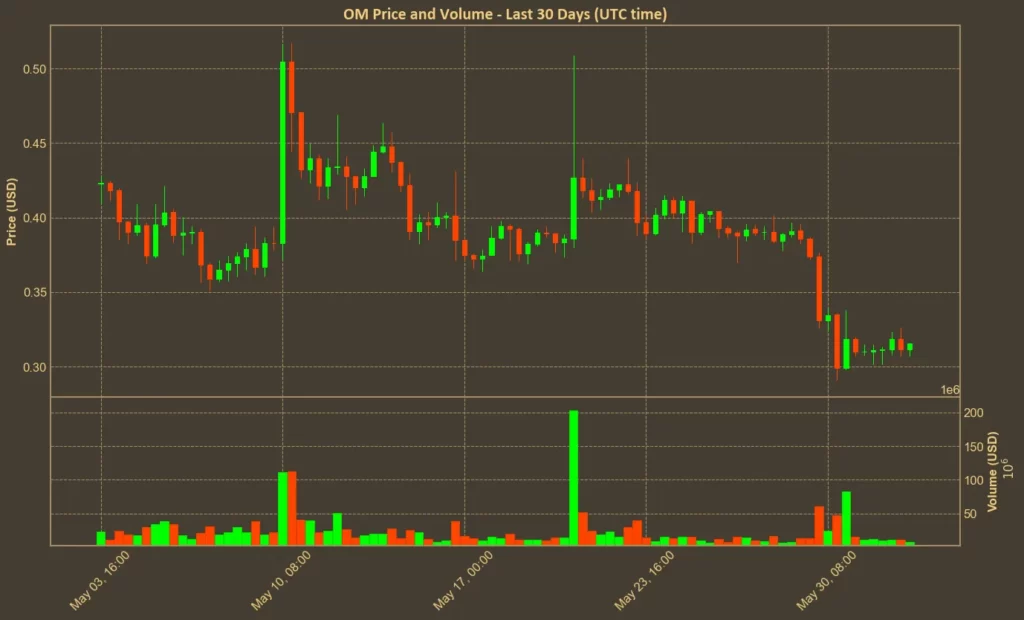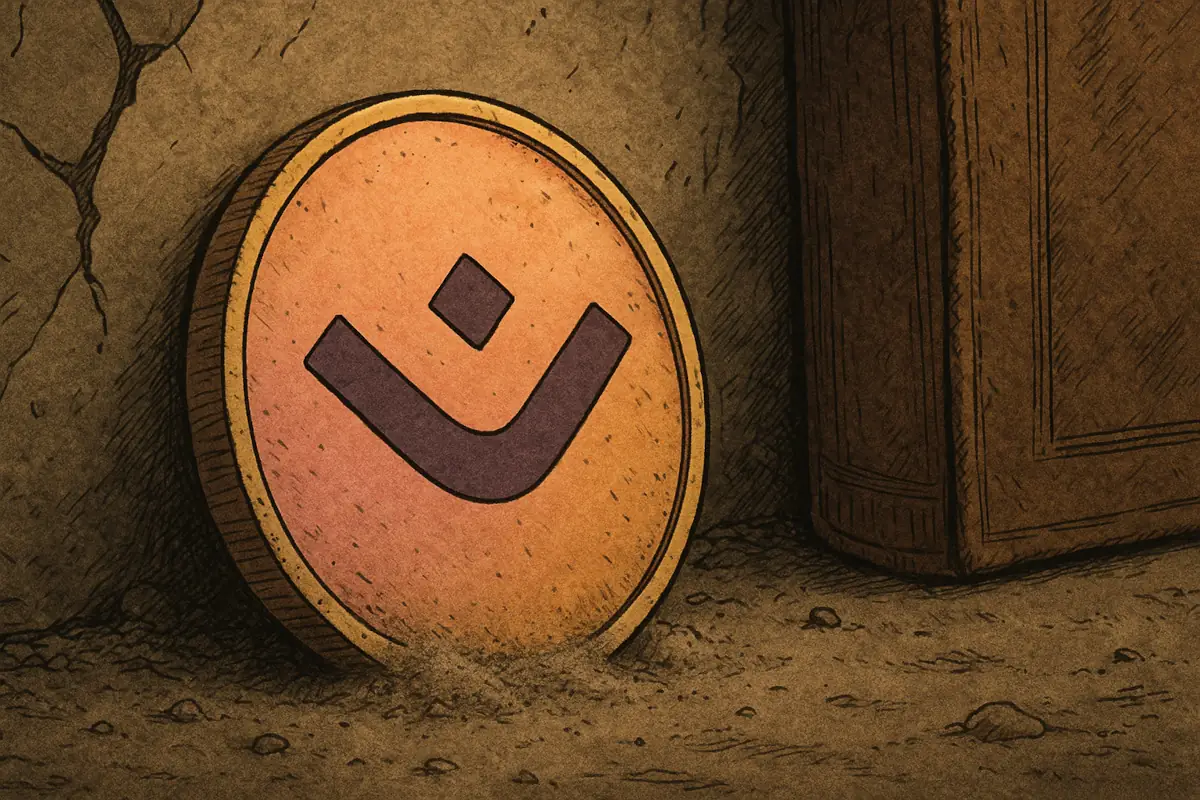Over seven weeks after the abrupt 90% drop in OM’s price, the Mantra team remains committed to pushing forward. But despite continued announcements, partnerships, and token management updates, the market response remains muted.
Table of Contents
Price Continues to Decline
OM currently trades around $0.31, down nearly 20% over the past week. It has failed to recover in any meaningful way since the April crash. Aside from a few brief spikes last month – including a short-lived move above $0.5 – price action has been consistently weak. That’s in contrast to the broader crypto market, which has rallied in recent weeks with Bitcoin nearing all-time highs.

This persistent underperformance highlights the core issue: while the Mantra team has stayed active, investor confidence has not returned.
Read also: Mantra (OM) Is Still Down 90% – And There’s No Sign of a Comeback
New Listings and Partnerships
In May, OM was listed on two major exchanges. Binance integrated the Mantra mainnet, enabling users to deposit and withdraw native OM coins directly, while South Korea’s Upbit exchange introduced OM trading with KRW, BTC, and USDT pairs. The team described these listings as key steps toward improving liquidity and expanding regional access, particularly in Asia. Although the listings sparked brief upticks in price, they didn’t lead to sustained momentum.
Mantra has also announced several new partnerships focused on expanding its real-world asset strategy. In Latin America, it teamed up with WIN Investments to tokenize sports-related assets, with an emphasis on football and the FIFA Solidarity Mechanism.
In the agricultural space, a partnership with Dimitra will target projects such as cacao production in Brazil and carbon credit generation in Mexico. On the infrastructure side, blockchain analytics firm Nansen joined Mantra Chain’s validator set, contributing data analysis and transparency tools to the protocol.
Token Actions and Transparency Steps
In terms of token economics, the Mantra team has implemented several notable measures. It burned over $165 million worth of OM tokens from the ERC-20 supply – a figure that accounts for nearly 20% of that supply. It also restructured the custody and visibility of seed, pre-seed, and Gendrop tokens. These tokens were moved to segregated custodial wallets under third-party management, and are now publicly tracked through the OM dashboard.
The dashboard itself has been updated throughout the month, offering real-time data on token supply, operational wallets, and ecosystem-wide flows. Governance updates have also moved forward, with internal validator nodes being reduced and new partners brought in to help decentralize the network further.
All of these efforts have been framed by the team as steps toward restoring transparency and mitigating perceived risks related to token control and insider influence.
Despite Efforts, Trust Remains Low
Still, sentiment remains weak. OM’s price continues to trend downward, hitting its lowest post-crash levels as of early June. Comments on official channels frequently reflect skepticism, with many investors saying they’ve lost confidence in both the token and the team’s messaging.
One ongoing concern is that the full details of the original April crash remain vague. While the official explanation pointed to cascading liquidations during low-volume hours, there has never been a full breakdown of transactions or disclosure of which exchanges or wallets were involved. That lack of clarity continues to fuel speculation and doubt.
In addition, a token buyback program – mentioned multiple times since April – has yet to be rolled out, and no investor compensation has been discussed. While community management has remained active, the broader investor base appears to be giving up.
Read also: Mantra (OM) Still Struggles: 4 Reasons Investors Aren’t Coming Back
Final Thoughts
The Mantra team hasn’t walked away. They continue to release updates, announce partnerships, and attempt to regain community trust. From new listings to green RWAs, there’s a clear push to show that the project is alive and working.
But despite all this activity, the token remains stuck in decline, with price performance and investor sentiment both showing little sign of improvement. Rebuilding trust – if it happens – may still be a long way off.




